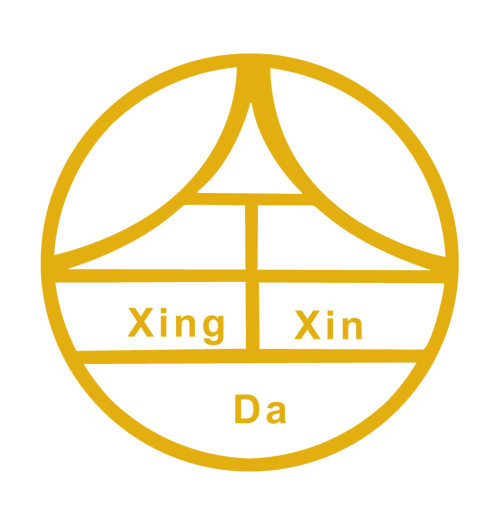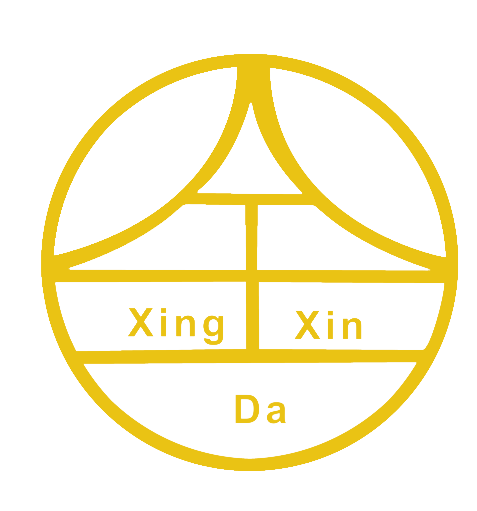Укрепление идентичности команды и брендинга с помощью настраиваемых нашивок на форму
Создание единства в команде через визуальную идентификацию
Выполняемые на заказ нашивки для команд превращают обычную форму в нечто большее, чем просто одежду, становясь инструментом формирования групповой идентичности. Исследование из отчета по организационной психологии за 2023 год показывает, что группы, придерживающиеся единых визуальных стандартов, в целом демонстрируют на 60% более высокий уровень удержания участников. Особенно интересно то, что такие нашивки работают вроде бы как переносные флаги, передающие общие цели через цвета, логотипы или даже маленькие значки, которые узнают все. Когда целые команды носят одинаковые нашивки с уникальными дизайнерскими элементами, это создает ощущение единства во время спортивных соревнований, деловых встреч или совместного участия в благотворительных мероприятиях.
Индивидуальные нашивки на форму для корпоративного, образовательного и спортивного брендинга
Сектора, требующие массовой персонализации формы, получают выгоду от универсальности нашивок, прикрепляемых утюгом:
- Корпоративные команды укрепляйте сообщения бренда с помощью нашивок с вышитыми логотипами
- Школы используйте термопередающие нашивки для экономичных обозначений класса или года
- Спортивные программы применяйте гибкие системы нумерации на сезонные составы
В ходе опроса по текстильному брендингу в 2023 году было выявлено 78% респондентов быстрее узнают организации когда логотипы размещаются на форме, а не на отдельных указателях, что подчеркивает влияние интегрированного брендинга
Психологические преимущества групповой принадлежности через персонализированную форму
Персонализированные нашивки для утюга удовлетворяют потребность Маслоу в принадлежности, при этом исследователи из Гарварда отметили повышение окситоцина на 22% когда члены носят дизайн с принадлежностью к группе (Журнал нейронаук 2024). Этот биохимический ответ усиливает преданность и сотрудничество — критически важные качества для спортивных команд, аварийных служб или волонтерских групп, работающих в условиях высокого давления.
Долговечность и эффективность применения нашивок с термоклеевым покрытием
Процесс нанесения и технология клеевого крепления персонализированных термонадписей
Термонадписи полагаются на специальный термопластичный клей, который активируется при температуре от 370 до 400 градусов по Фаренгейту (примерно от 188 до 204 по Цельсию). При их нанесении с помощью термопресса устройство равномерно распределяет тепло, чтобы клей мог надежно закрепиться на тканях, таких как хлопок, полиэстер и даже деним. Однако будьте осторожны с такими материалами, как нейлон или винил, поскольку они могут повредиться от высокой температуры. После охлаждения клей образует довольно прочное соединение — гибкое, но в то же время устойчивое, которое повторяет движения ткани, к которой прикреплен. Если вы делаете нашивки для мест, подверженных частому трению или растяжению, большинство профессионалов рекомендуют проводить нагревание дважды вместо одного раза. Сначала нанесите тепло на саму нашивку, затем переверните одежду и повторите процесс с нижней стороны. Этот небольшой трюк помогает надежно зафиксировать края на длительный срок.
Устойчивость к стирке, термостойкость и долговечность в носке
Современное настраиваемое железо на патчах может продержаться около 25 коммерческих стирки в соответствии с текстильной промышленности стандарты от 2023 года. Что делает их такими жесткими? Секрет заключается в специальных полимерах, которые соединены между собой в клеевом слое, и которые лучше противостоят детергентам и тепловому повреждению. Испытания показали, что 95 из 100 пластырей остаются на спортивном снаряжении даже после того, как они носятся недельно в течение года, если никто не берет для чистки паровую железу. Хочешь, чтобы эти пластыри держались дольше? Добавление некоторых периметров швов вместе с надлежащим применением тепла увеличивает продолжительность их жизни примерно на 40% в областях, где одежда напрягается и тянется больше всего, таких как плечи и колени. Большинство людей даже не замечают проблем с подъемом края, так как это происходит только в 3% случаев, когда одежда просто сушится и прессуется изнутри вместо использования прямых методов нагрева. Этот подход отлично подходит для команд, которым нужно регулярно чистить форму, не беспокоясь о том, что украшения развяжутся.
Методы крепления: термопередача, шитье и другие. Практическое сравнение
Преимущества и недостатки термоприклеивания, шитья и использования липучки для нашивок
Команды, отдающие приоритет эффективности, часто выбирают custom iron on patches благодаря технологии термоклеевого соединения, которое образуется за считанные секунды с минимальным оборудованием. Основные различия включают:
| Метод | Прочность | Легкость применения | Идеальным для |
|---|---|---|---|
| Приклейка | более 25 стирок* | Высокий | Хлопок, джинсы, быстрые обновления |
| Пришить | Неопределенно | Средний | Форменная одежда интенсивного использования, кожа |
| Липучка | Умеренный | Высокий | Тактическое снаряжение, сменные дизайны |
*На основе отраслевых испытаний в условиях стирки при средней температуре. Шитье остается эталоном прочности, а липучка подходит командам, которым нужны частые изменения дизайна.
Развенчивание мифа о прочности: реальная эксплуатационная стойкость нашивок термопередачи
Критики часто недооценивают современные термоклеи. Исследования показывают, что при нанесении на совместимые ткани (∥65% хлопок/полиэстер) при 150°C (302°F), нашивки, приклеенные утюгом, демонстрируют:
- 93% сохранения адгезии после 10 промышленных стирок
- Сопротивление истиранию, равное нашивкам, пришитым на куртки (стандарт ASTM D4966-22)
- на 30% более быстрое нанесение по сравнению с шитьем, без ошибок строчки
Максимальный срок службы достигается предварительным нагреванием одежды, избеганием смягчителей тканей и фиксацией краев с перекрытием в 2 секунды во время нанесения. Для формы, которая должна прослужить пять лет или дольше, гибридные методы (термонанос плюс строчка по периметру) обеспечивают оптимальный баланс скорости и долговечности.
Гибкость дизайна и варианты персонализации для командной формы
Бесконечные возможности дизайна с вышивкой, различными формами и размерами
Современные нашивки на липучке позволяют добиться потрясающих результатов вышивки, включая эффекты 3D-пены, узоры цепного стежка и аккуратные края мерроу, придающие профессиональный вид. При проектировании доступно около 12 базовых форм, но в последнее время чаще выбирают полностью индивидуальные контуры. Размеры могут быть очень маленькими, например, 1 дюйм, незаметно размещённый на куртке, и до крупных 8-дюймовых эмблем, привлекающих внимание. Современные технологии производства позволяют добиться плавных переходов между оттенками, добавлять блестящие металлические нити в различные участки, а также использовать светящиеся в темноте материалы, чтобы выделяться на вечерних мероприятиях.
Индивидуальные нашивки с именем, номером и монограммой для персональной идентификации
Персонализированные нашивки позволяют командам отдавать дань уважения индивидуальным вкладам, сохраняя при этом визуальное единство. Комбинации фамилий и номеров, нанесенные методом термопередачи, сохраняются после 50+ промышленных стирок, обеспечивая видимость игроков. Монограммы на рукавах или воротниках предлагают дискретную персонализацию для тренеров и персонала, не нарушая общий бренд команды.
Интеграция логотипов и цветов для целостного брендированного текстиля
Размещение логотипов в правильных местах и обеспечение соответствия цветов стандартам Pantone помогает поддерживать единый бренд на всей спортивной форме. Согласно исследованию, представленному на прошлогодней конференции по брендингу спортивных команд, команды, использовавшие правильно подобранные цветные нашивки, добились того, что их логотипы распознавались болельщиками на 38 процентов быстрее во время просмотра матчей, чем у команд с несочетающимися цветами. Правильный подбор цветов важен не только для внешнего вида на спортивных мероприятиях. Единый бренд также сильнее проявляется в таких вещах, как плакаты, флаеры, и когда спортсмены взаимодействуют с местными сообществами.
Стоимость и эффективность времени при изготовлении индивидуальных нашивок для команд
Быстрое нанесение с использованием термотрансферной технологии
Шевроны с термоактивным клеем позволяют легко персонализировать форму. Достаточно обычного утюга или термопресса — и через 15–30 секунд нашивка надежно закрепляется. Оборудовать таким образом форму для 50 и более человек можно за час. Это удобно, когда спортивным командам нужно срочно изменить состав или компаниям оперативно обновить брендирование перед важным мероприятием. По данным исследования Ассоциации производителей текстильной промышленности за 2023 год, использование термонадписей сокращает время на подготовку на 72 % по сравнению с традиционной вышивкой. Это действительно экономит массу времени и сил.
Снижение затрат на рабочую силу и производство по сравнению с методами пришивания
Переход на нашивки с термоплавким клеем позволяет сократить расходы на шитье, которые обычно составляют около половины затрат компаний на традиционные нашивки. Недавний отчет Apparel Production Insights показывает, сколько денег это позволяет сэкономить на самом деле. Команды могут сэкономить от семи до двенадцати долларов на каждый комплект формы, если выбирать нашивки с термоплавким клеем вместо пришивных. А чем больше объем заказа, тем выгоднее предложение. Для заказа 500 единиц цена снижается примерно на треть благодаря технологии термопереноса. Владельцы фабрик оценивают это преимущество, так как им не нужно постоянно менять нитки или настраивать специальные машины для пришивания. Достаточно просто один раз пропустить все через оборудование и закончить процесс.
Ключевые метрики эффективности:
| Фактор | Метод термонанесения | Метод пришивания |
|---|---|---|
| Среднее время нанесения | 23 секунды | 8 минут |
| Стоимость рабочей силы на одну нашивку | $0.10 | $2.75 |
| Требования к оборудованию | Домашний утюг | Промышленная швейная машина |
Эти операционные преимущества делают нашивки с термоплавким клеем идеальным решением для школ, киберспортивных команд и корпораций, которым нужны масштабируемые и экономически эффективные решения для брендинга.
Часто задаваемые вопросы
-
Что такое нашивки с термоплавким клеем на заказ?
Пользовательские нашивки на одежду представляют собой текстильные изделия, которые можно наносить на ткань с помощью тепла. Они часто используются для брендинга и формирования идентификации команды через форму и одежду. -
Как работают нашивки на одежду?
Нашивки на одежду работают за счет специального термопластичного клея, который соединяется с тканью при применении тепла. Это создает прочное соединение, подходящее для различных материалов. -
Каковы преимущества использования нашивок на одежду по сравнению с нашивками, пришиваемыми на одежду?
Нашивки на одежду обеспечивают быстрое нанесение с минимальным количеством необходимого оборудования, и они обычно более экономичны с точки зрения рабочей силы и производства по сравнению со швейными методами. Они идеально подходят для быстрого обновления и персонализации. -
Могут ли нашивки на одежду выдерживать стирку?
Да, современные нашивки на одежду могут выдерживать множество стирок, часто до 25 промышленных стирок или более, не теряя своих клеящих свойств. -
На какие материалы могут наноситься нашивки на одежду?
Нагревательные аппликации подходят для материалов, таких как хлопок, полиэстер и деним, но материалы, такие как нейлон или винил, могут быть повреждены от нагревания.
Содержание
- Укрепление идентичности команды и брендинга с помощью настраиваемых нашивок на форму
- Долговечность и эффективность применения нашивок с термоклеевым покрытием
- Методы крепления: термопередача, шитье и другие. Практическое сравнение
- Гибкость дизайна и варианты персонализации для командной формы
- Стоимость и эффективность времени при изготовлении индивидуальных нашивок для команд





